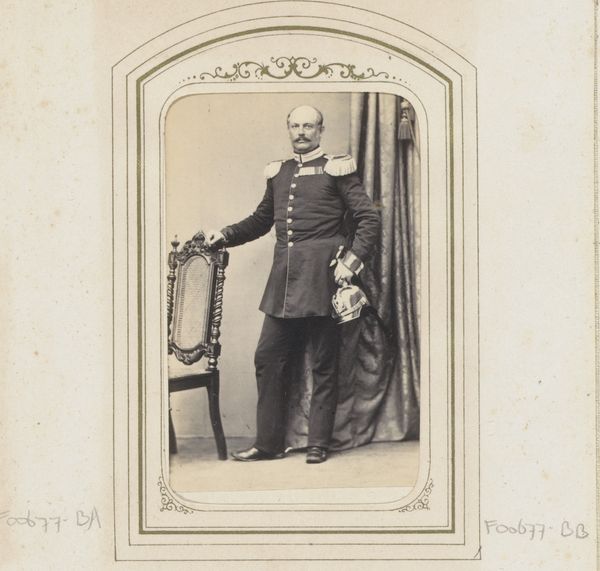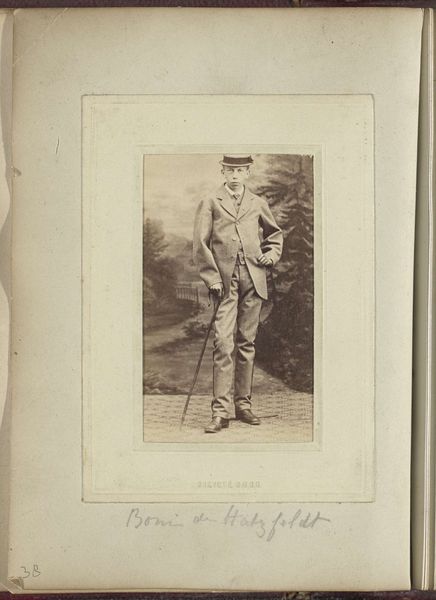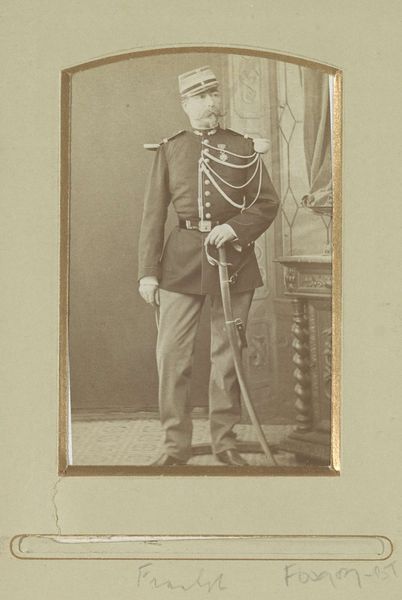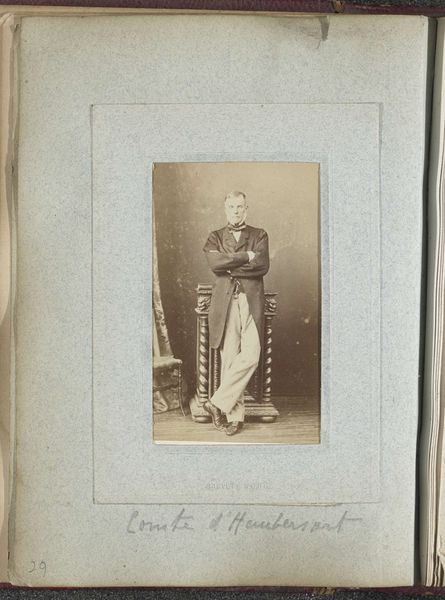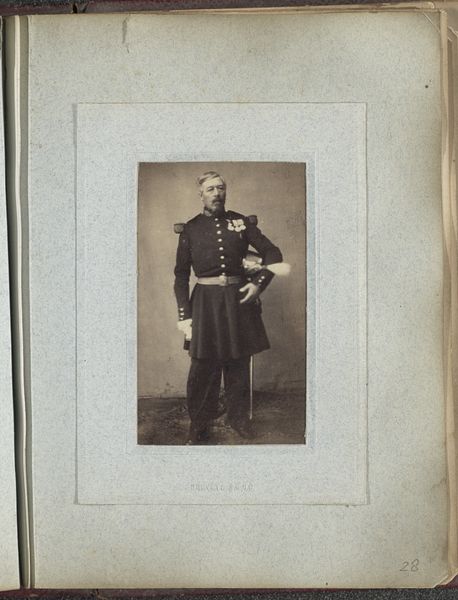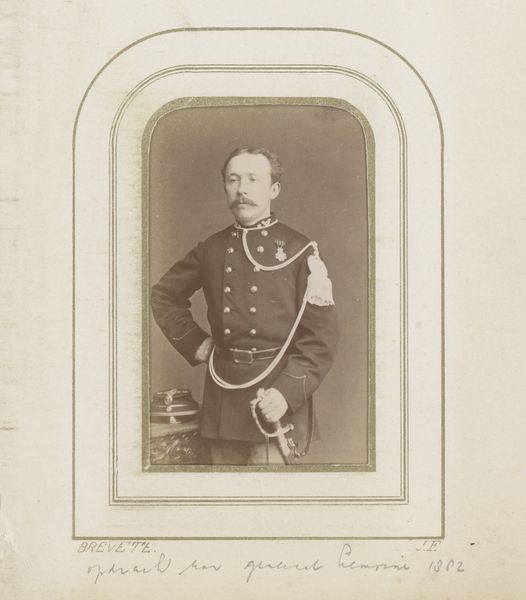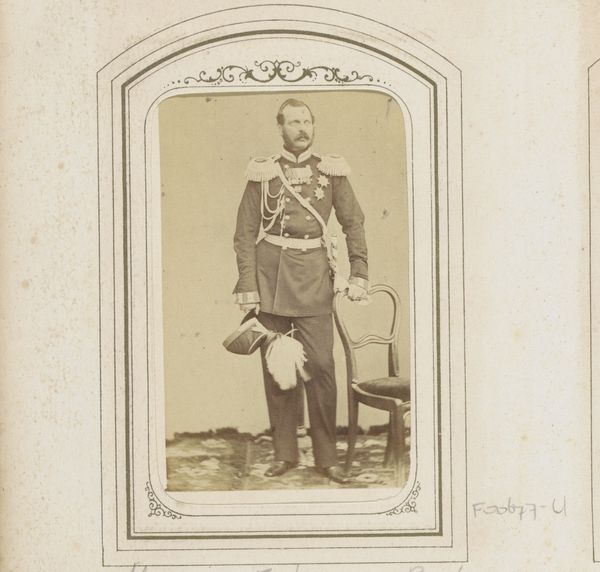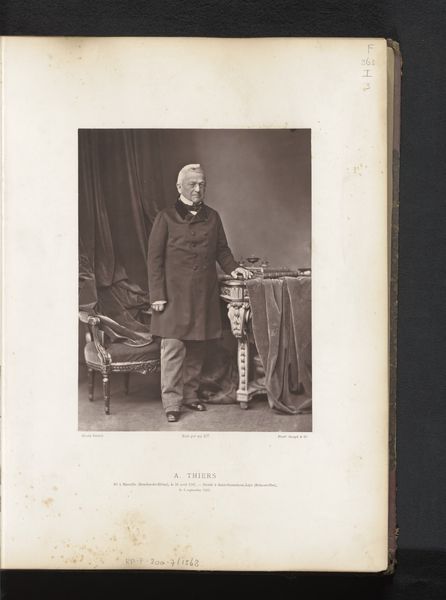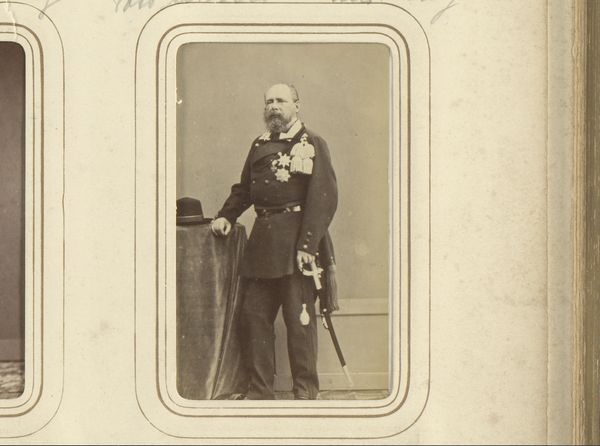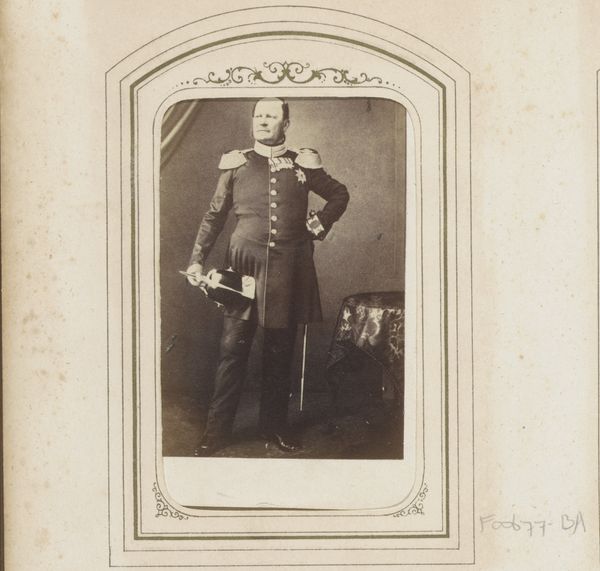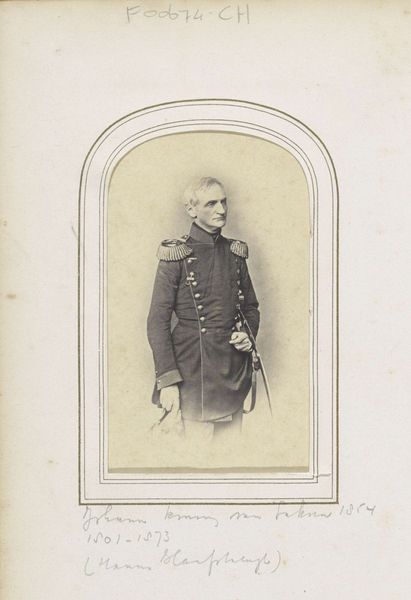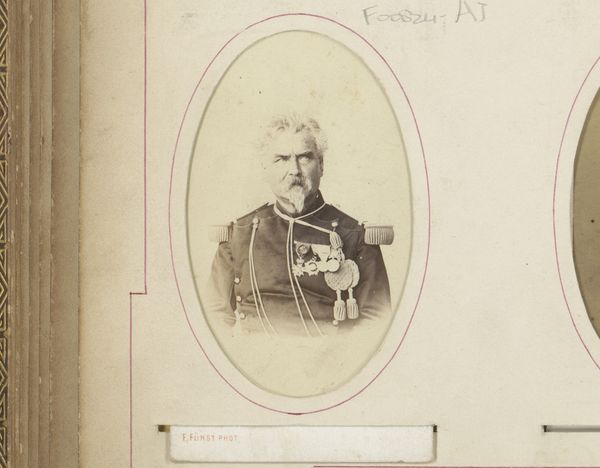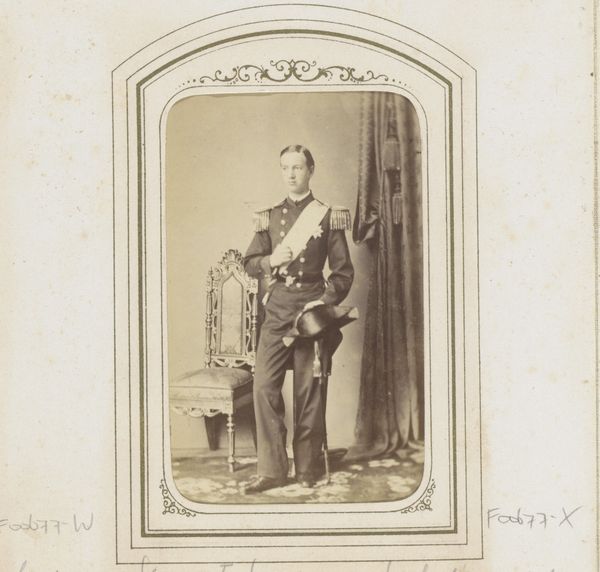
photography
#
portrait
#
medal
#
16_19th-century
#
photography
#
19th century
Dimensions: height 83 mm, width 50 mm
Copyright: Rijks Museum: Open Domain
Curator: Here we have a photograph entitled “Portret van een man met zwaard in uniform met medailles," or "Portrait of a Man with a Sword in Uniform with Medals," attributed to Charles Billotte & Cie., and believed to be created between 1861 and 1862. Editor: My immediate reaction is a sense of formality, even stiffness. The monochrome palette and the subject's rigid posture lend it a certain gravitas, bordering on solemnity. Curator: Precisely. The composition directs our attention to the subject’s stern countenance, which embodies ideals of duty and decorum typically associated with the military. His uniform, with its intricate detailing, suggests a particular emphasis on order and hierarchy. Editor: Absolutely, but how might the visual weight of the military regalia be contextualized during this period? The presence of medals—tangible markers of valor and service—hints at the historical backdrop of military conflicts of the time and the potential costs to society. We have to remember this was only a decade or so after the revolutions of 1848, so conservative powers across Europe were desperately trying to assert dominance, and one way to do that was by celebrating the military class. Curator: Interesting—I am less convinced by this interpretation and instead propose focusing on the contrast of textures and the way light plays across the photograph’s surface. Look at the smooth planes of his face against the complex folds of the curtain backdrop; this interplay emphasizes the artificiality of the tableau. The neutral background allows Billotte to orchestrate tonality—a way to isolate and celebrate form for its own sake. Editor: I think you can have both. Form never exists in a vacuum. We could examine this portrait through the lens of 19th-century ideals of masculinity. The sitter’s stoic demeanor, complemented by the symbols of military prowess, can serve as a visual codification of prevailing societal norms surrounding strength and control. It evokes larger discussions regarding social position, the authority and exercise of power, and its inherent inequalities. Curator: I can certainly appreciate your broader insights and historical perspectives, however my aesthetic preferences guide my emphasis on line, tone, and balance in this example of early photographic portraiture. Editor: Of course. Art offers a rich terrain where aesthetics and cultural narratives intertwine, don't you think? Each of our perspectives allows for different—but interconnected—avenues into the piece’s multilayered narrative.
Comments
No comments
Be the first to comment and join the conversation on the ultimate creative platform.
